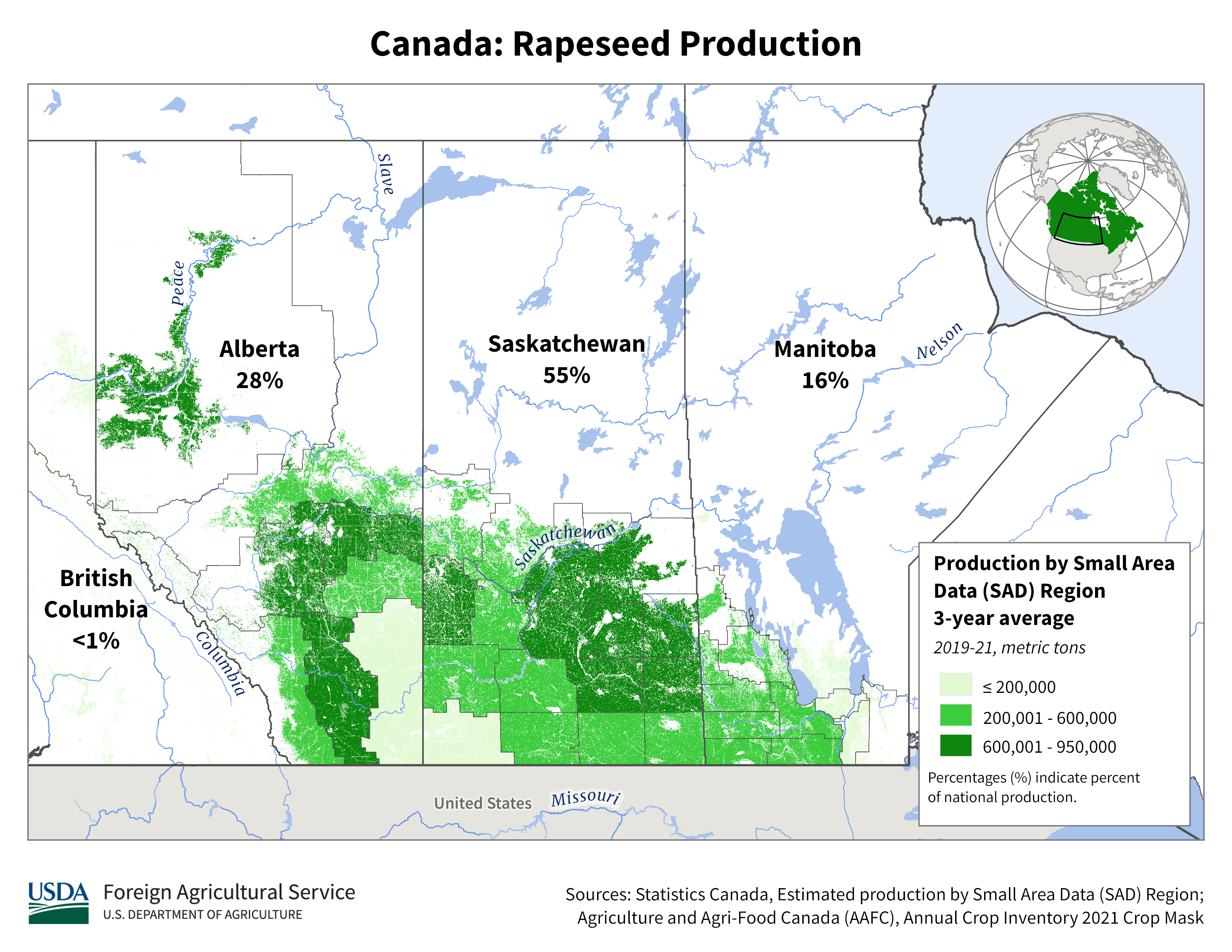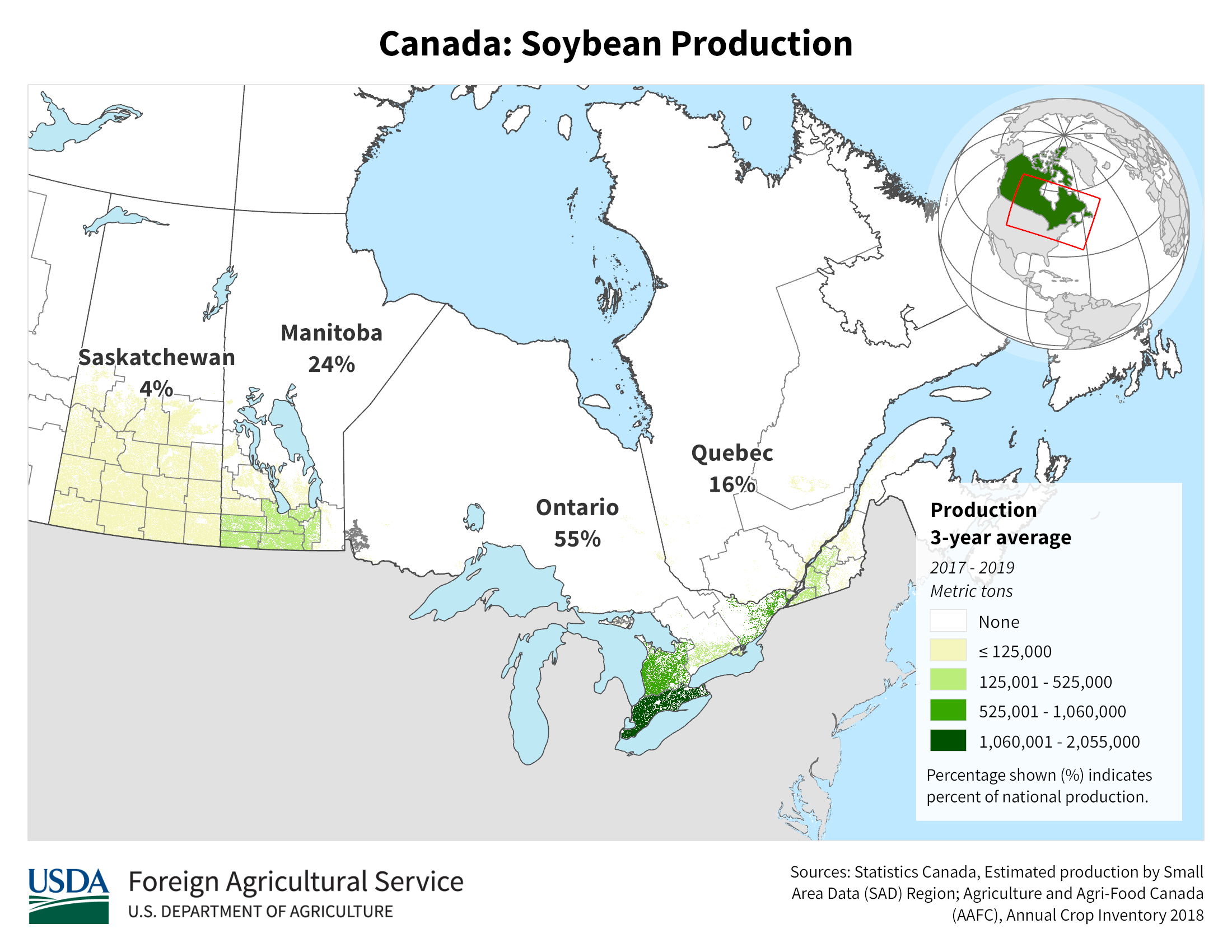What better way to understand concepts big and small than through data visualizations? In this blog series, we curate insightful visuals to provide commentary on events, academic theories and themes related to economics and transportation. Join us as we explore and engage with interesting ideas from around the world.
Agriculture is a vital component of the Canadian economy, with its exports playing a crucial role in numerous global supply chains. This week’s Data Vizdom explores the geography of Canada’s most widely produced field crops, highlighting the industry’s regional economic significance.
The agriculture and agro-food system as a whole accounts for 1 in 9 jobs in Canada, generating $150 billion, or 7% of the country’s GDP, in 2023. The industry consists of several key segments, with primary agriculture contributing $31.7 billion to GDP and accounting for about 10% of total jobs. Influenced by soil and weather conditions, Canada’s vast territory allows for the production of a diverse range of crops and yields.
Wheat is by far the most widely grown field crop in Canada, with the country producing a total of 32.95 million metric tons of spring, winter and durum wheat in 2023. This makes Canada the fifth largest wheat producer globally, accounting for 4% of the world’s total production. While production is concentrated in the Prairie Provinces, about 10% of the output comes from Ontario and Québec.

Canada Crop Production Maps – USDA Foreign Agricultural Service
Rapeseed, primarily used for producing cooking oil, is a key crop for Canada, which produced 19.19 million metric tons—21% of the global output—in 2023, positioning it as the top producer in the world. Its production is concentrated in the Prairie Provinces, with Saskatchewan accounting for over half of the country’s total output.

Canada Crop Production Maps – USDA Foreign Agricultural Service
Although Canada’s corn production accounts for only 1% of global production, totaling 15.42 million metric tons, it was the third most important crop for the country in 2023. Regionally, corn is the most significant field crop for Ontario and Québec, where it is primarily grown.

Canada Crop Production Maps – USDA Foreign Agricultural Service
Approximately 90% of Canada’s barley production comes from Alberta and Saskatchewan. In total, the country produced 8.91 million metric tons, accounting for about 6% of the global output of barley.

Canada Crop Production Maps – USDA Foreign Agricultural Service
Soybeans are the fifth most important crop in Canada, with approximately 55% of the production coming from Ontario, where they rank as the province’s third largest crop and livestock commodity. With a total output of 6.98 million metric tons, Canada supplied 2% of the crop’s global production in 2023.

Canada Crop Production Maps – USDA Foreign Agricultural Service
In conclusion, agriculture is a cornerstone of the Canadian economy, significantly contributing to employment and GDP while playing a crucial role in global supply chains. The geographical distribution and economic importance of key field crops illustrate how Canada’s diverse agricultural sector ensures its competitiveness and relevance in the global market.
Help us make this series even better! We would love to hear your thoughts and suggestions on content makers we should follow to discover noteworthy projects and visualizations. Write to Bilal Siddika on LinkedIn or via email.
